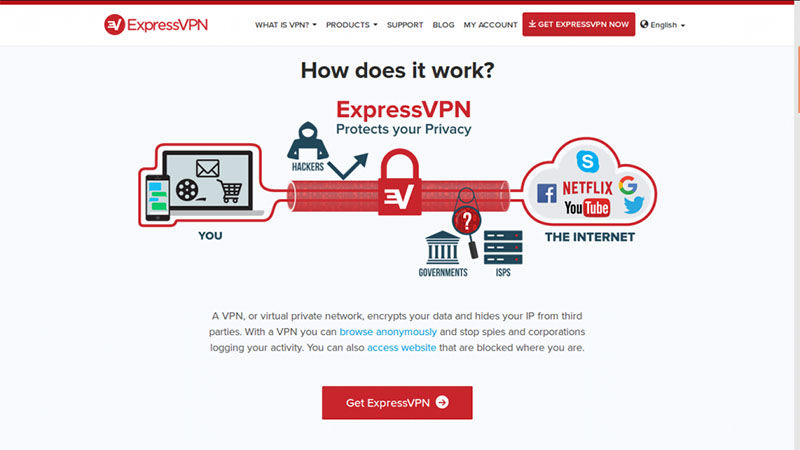
This tutorial will cover what a virtual private network (VPN) is, why it’s essential to use one, and how to set it up correctly. We’ll also cover a few subjects such as Socks5 Proxies, proxy over Tor, and some using added security like virtual machines.
Why is a Virtual Private Network (VPN) Important
Consider how much time you spend online and the amount of sensitive data you transmit over an inherently insecure Internet connection. If you don’t feel a creeping sense of dread come over you, you must not know the dangers lurking at the opposite end of that server.
Those aware of the dangers of the Internet employ as many measures as possible to keep their data secure. But unfortunately, many of those security-conscious individuals only became aware of the risks once their systems were breached or online accounts hacked.
Additionally, in December 2017, the Trump administration killed Obama-era Net Neutrality, ensuring that all Internet traffic was treated equally. With Net Neutrality lifted, broadband companies could slow down or entirely block applications or websites of perceived adversaries.
Worse yet, such unfettered power could lead to other abuses, such as censorship for political reasons. And it isn’t only the United States; other countries are looking to do the same. With technology being used by others to monitor, track, stalk, and control users, understanding how to use a VPN is essential in improving digital security.
Types of VPN
Here are two basic types of VPN categories:
1. Site-to-Site VPN
Large companies and MNCs use these VPNs with offices in different locations. Because distance prevents direct communication between offices, they provide a direct connection between the network of different offices.
- Extranet-based VPN: When a company creates a connection to another company’s office without a direct connection, it is called an extranet-based VPN.
- Intranet-based VPN: We say it’s an intranet-based VPN when more than two offices of the same organization connect to share resources and information.
2. Remote Access VPN
Remote access VPN allows users to remotely access all resources/services once connected to the VPN. These devices can be smartphones, laptops, and desktops and are called endpoint devices.
The Internet is very important for establishing a private and secure connection between a private network and a user. A company’s remote workers connect a VPN to the company’s private network to access its files and resources on a private browser.
The statistics speak for themselves

In April 2018, Careem, a middle east ride-sharing application similar to Uber, publicly announced that hackers had compromised the data of approximately 14 million users in January 2018. The cyber attack resulted in the loss of user names, email addresses, phone numbers, and trip data. However, Careem claimed no passwords or credit card information was stolen because such information was stored on external third-party servers and not breached during the attack.
In May 2018, the most extensive data breach and release occurred in Japan when it was reported that over 200 million Japanese Internet users had their data put up for sale on a dark web cybercrime forum. The hackers extracted the data through numerous attacks and from over 50 Japanese websites ranging from retail, food and beverage, entertainment, financial, and transportation.
The data for sale on the dark web forum varied but included real names, birth dates, physical addresses, email addresses, phone numbers, and, in some cases, passwords to an assortment of accounts.
As for cryptocurrencies, they’ve been by farthest the biggest target of cybercriminals this year, with approximately $1.1 billion in cryptocurrency stolen. And compared to the long list of other cyber attacks, taking people’s crypto is the easiest thing to do for even noob hackers. The primary method employed in hijacking cryptocurrencies is ransomware.
Rick McElroy, a strategist for Carbon Black Security, says, “It’s surprising just how easy it is without any tech skill to commit cybercrimes like ransomware.” Ransomware programs are for sale all over the dark web and feature detailed tutorials on how to dispatch them.
Altcoins comprised 44 percent of cyber-related attacks. This is because altcoins are much more difficult to trace than bitcoin, making it easier for hackers to get away Scot-free.
And while all of this is going on, you have things going on like the Cambridge Analytica scandal, where tens of millions of people’s personal information was harvested from social media giant Facebook.
VPNs only work if you practice good Operational Security (OpSec)
If you use a VPN and employ good operational security (OpSec) measures while conducting business online, you will be far less likely to fall victim to cyber-attacks. This means using a VPN is only one aspect of the security mechanism. For a VPN to work, you’ll have to start practicing a lot more secrecy, which means learning to operate as a virtual unknown.
OpSec is a term used by the United States military for any analytical process used to thwart an adversary’s attempt at obtaining sensitive information that could compromise the secrecy or operational security of a covert mission. And despite the common misconception that OpSec is only for those operating illegally on the dark web, OpSec is about thinking offensively and defensively in everyday life.
Why you should care about OpSec
When topics such as Tor Browser, VPNs, and online anonymity come up, a saying is repeated a lot: “If you have nothing to hide, you have nothing to fear.” This statement is as far from the truth as any statement can be, for everyone has something they want or need to hide because there are and always will be those who want to invade your privacy, tread on your rights, and steal your personal information.
Hackers are continually searching for and profiling potential targets, looking for that one small weakness in OpSec. An attacker only needs to invest less than a few hours of online recon using a mixture of manual and automated Open Source Intelligence (OSINT) techniques to obtain their target:
- Full name
- Date of birth
- SSN/NI number
- Mother’s maiden name
- Social media information/posts
- Family/friends/colleagues
- Mobile/work telephone numbers
- Email accounts and passwords
- Employment information
- Location
- Online digital footprint
- Financial information
A motivated attacker possessing the above information has all they need to do severe damage, especially if the target reuses passwords, uses an email or username that provides clues to your identity or uses the same email as a login for multiple web applications. And though these basic mistakes in OpSec are reported in the media almost daily, millions of people become victims because of it.
But it’s not the noobie mistakes that genuinely define slips in OpSec, but rather the countless examples where sophisticated criminal organizations were systematically dismantled because they left behind tiny bits of data that led law enforcement to the real person.
The takedown of AlphaBay admin Alexandre Cazes is the perfect case and point
One of their most intriguing case studies is the takedown of the AlphaBay, a once-thriving darknet marketplace that was the brainchild of Alexandre Cazes. On July 5, 2017, Cazes was arrested in Bangkok, Thailand, in a joint operation led by Interpol, the NCA, the FBI, and other agencies.
Tracking a single email account Cazes used for his LinkedIn profile and his legal computer repair business in Canada is all authorities need to find the rest of the breadcrumbs.
How to find a reliable VPN?
Your desire decides what kind of VPN you should use. Reliable VPN provides high protocol, robust security, and excellent encryption and connects you to several servers.
Here are some points you need to keep in mind when looking for a VPN:
- Make sure your VPN has enough encryption to hide your IP address from third parties and ISPs.
- For a VPN, its protocols are important. Choose a VPN that offers WireGuard or OpenVPN for better encryption.
- Always connect to a VPN that provides an extra shield of protection through shared IP addresses.
- Check VPN server locations worldwide and review enough servers to reduce server load.
- Choose a VPN that offers multiple supported platforms and different device coverage in just one subscription.
- The “kill switch” feature should be considered as it closes your program and internet connection whenever your selected service is interrupted.
- We recommend a free trial VPN; if it suits your needs, then purchase a plan.
- Always read the privacy policy before choosing a VPN.
How to set up and use a VPN appropriately

Now that we have covered what VPN is and why using a VPN is more critical than ever, it’s time to go over how to set up a VPN. The first step is to download ExpressVPN, which offers download options for Mac, Windows, and Linux, among others.
One of the great things about this VPN provider is it allows you to pay with bitcoin through Bitpay.
Once you’ve signed up and downloaded the VPN program, you’ll need to decide how you wish to set it up. There are a few ways you can use a VPN.
Installing a VPN on your router
The advantage of using a VPN on your home or business router is you don’t have to install the application on every device that uses the router. This means anyone who visits your home or business can connect to your router and your VPN automatically covers them.
After setting up the VPN on your computer, you will need to download and install DD-WRT onto your router to function as a VPN client, allowing it to connect to the VPN server. Originally designed to run on the Linksys WRT54G series router, this Linux-based firmware is now capable of running on various models.
The DD-WRT site will ask you to enter at least three characters of the router’s name, manufacturer, or revision. Once you find your router model, you can then download the files for that specific model.
DD-WRT replaces the original equipment manufacturer (OEM) firmware and provides some significant enhancements. The “software” that operates your router is an excellent way to think of it. Additionally, the DD-WRT firmware enables you to configure the VPN service on the router.
Without DD-WRT, you will not be able to set up any VPN service on your router. This is because your stock router has limitations built into the default firmware. Upgrading the firmware to DD-WRT removes those limitations, transforming it into a robust commercial-class router featuring advanced functionality, including being able to run VPNs and their robust encryption algorithms and ciphers.
If your router doesn’t come with DD-WRT pre-installed, you’ll have to install it yourself using a process called “flashing.” It’s a simple thing to do but can be slightly tricky in some cases. If done incorrectly, your router can be irreversibly damaged and no longer usable. Furthermore, flashing third-party firmware onto your router will void the warranty if it still has one.
In order to find out how to flash your particular model of router, you can Google “how to flash (model of the router)” and you should find plenty of tutorials explaining how. In addition, you can visit this DD-WRT FAQ for other information about flashing DD-WRT onto a router.
Once you’ve flashed your router and installed the VPN, you can run all your devices through one VPN without having to install it on all of them.
Android and iPhone tethering VPN passthrough

To run an Android and iPhone tethering VPN passthrough, you may have to root your Android or jailbreak your iPhone. In most cases, this is pretty straightforward. Nevertheless, it’s not suggested for everyone. You should only root or jailbreak your phone if you have the knowledge to do so and understand its risks. Like with flashing a router, every phone model is different, so you will have to research before jumping into it.
Another good reason to run a VPN on your Android or iPhone is to protect yourself while using an unsecured or “open” Wi-Fi hotspot. Open hotspots also involve unencrypted connections, which leave you vulnerable to hackers and nefarious people who want to steal information from your phone.
Using a VPN on your PC
You’ll have to go through different processes depending on whether you’re setting up the VPN on Windows or Mac iOS.
Windows 10
- Click on Cortana and type “VPN.” You can also open Settings, click on Network & Internet, and then VPN.
- At the very top, you’ll see “Change virtual private networks (VPN).”
- At the top of the VPN screen settings, click “Add a VPN connection.”
- On the next screen, enter the VPN details.
- Under “VPN provider” choose “Windows (built-in)” in the drop-down menu.
- Fill out the “Connection name” and “Server name or address.”
- Now scroll down and fill in your username and password. The VPN service provider would have provided this.
- Click “Save” and close the settings application.
The process above works for the more straightforward VPN connection types like L2TP and PPTP, but for IKEv2, which requires you to install a root certificate from a VPN provider, you’ll have to handle things differently. Furthermore, not all services support IKEv2, which means using this method greatly depends on your chosen VPN service provider.
Using a VPN on your Mac
To connect to a VPN on your Mac, go to Network preferences. Now choose the “Apple” symbol. Next, choose “System Preferences” and then click “Network.” Next, select your VPN service in the list on the left side of the screen. If you see a Configuration pop-up menu, click on it next and choose a configuration. Please note that you may only find one configuration option. Then click on “Connect.”








By Philip Piletic
Updated on 31st July 2022